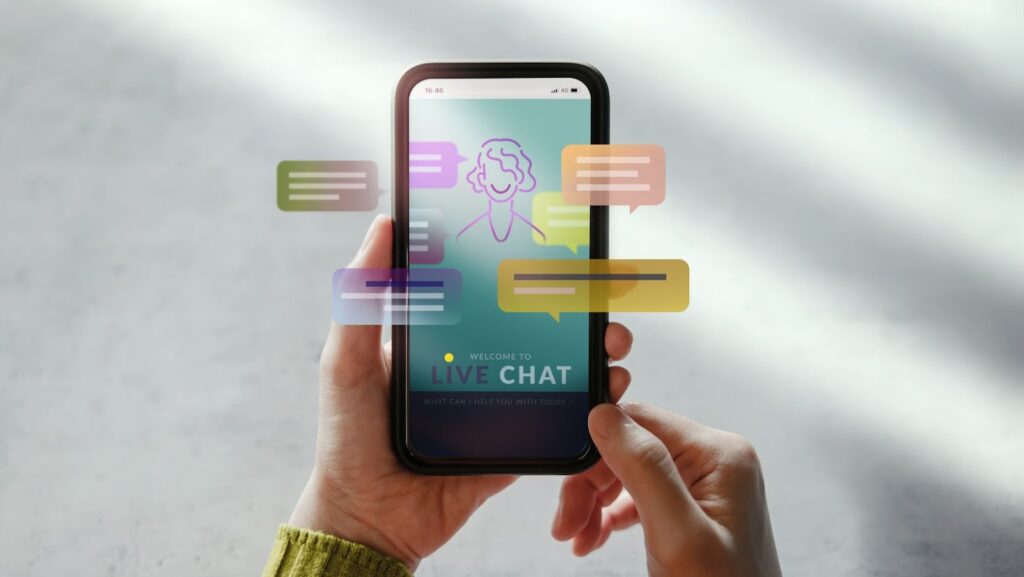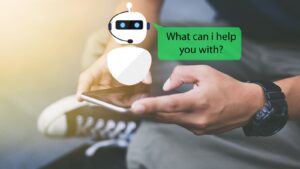The History of Releasing Chatbot

The history of releasing chatbots dates back to the mid-to-late 20th century. In 1966, Joseph Weizenbaum developed the first chatbot, ELIZA, which was designed to simulate conversation with a human being. Over the next few decades, other chatbots like PARRY and ALICE were developed, and their capabilities continued to improve.
In the 2010s, chatbots became increasingly popular for customer service and support, with companies like Apple, Amazon, and Google releasing their own versions of the technology. With advances in machine learning and natural language processing, chatbots are now able to provide more sophisticated responses and engage in more complex interactions with users.
When was Chatbot Released
Chatbots have been around for decades, with the first chatbot launching over 50 years ago. Early chatbots were made with the intention of providing an interactive computer program that could hold a conversation with a human. Before the dawn of artificial intelligence (AI) and natural language processing (NLP), these chatbots relied on scripted responses and simple keyword recognition to understand conversations.
Over the years, chatbot technology has evolved and become more sophisticated and advanced, with the ability to understand voice commands, provide personalized recommendations and autonomously engage with customers. Let’s take a look at the history and evolution of chatbot technology.
Chatbots in the 1960s and 1970s
The advent of chatbots dates back to the 1960s and 1970s when computer scientists developed early AI programs that could simulate conversation. ELIZA, created in 1966 by Joseph Weizenbaum, was one of the first chatbots that could mimic human-like dialogue patterns. Many people who interacted with ELIZA were convinced they were talking to a human.
Another notable chatbot from the time is PARRY, developed by Kenneth Colby in 1972. This program simulated a paranoid individual, and conversations with PARRY would go back and forth between pleasant exchanges and a state of agitation. While these early chatbots were groundbreaking for their time, they were limited in their capabilities and took up large amounts of computing power. It wasn’t until years later, with advances in technology and machine learning, that chatbots became more sophisticated and widely used.
The Introduction of ELIZA in the 1980s
ELIZA was one of the earliest chatbots ever created, with its introduction in the 1960s as a computer program designed to simulate human conversation. In the early 1980s, ELIZA’s popularity soared, and it became one of the key technologies behind the development of chatbots. ELIZA was created by MIT professor Joseph Weizenbaum, who designed it to mimic a therapist in conversation.

ELIZA was programmed to recognize keywords in user input and respond accordingly, asking follow-up questions and prompting deeper exploration of the user’s feelings and experiences. While ELIZA was not capable of true artificial intelligence, it paved the way for the development of more advanced chatbots in the years to come. Today, chatbots are widely used in customer service, ecommerce, and other fields to provide assistance and support to users.
The Emergence of A.L.I.C.E in the Late 1990s
In the late 1990s, A.L.I.C.E (Artificial Linguistic Internet Computer Entity), a chatbot developed by Dr. Richard Wallace, made its debut online, marking the early beginnings of chatbots and their evolution over time. A.L.I.C.E was designed to simulate a human conversation, catering to people’s needs for easy access to information and assistance by using natural language processing and machine learning technologies.
It paved the way for the development of more complex chatbots that are now used for a wide range of purposes, from customer service to entertainment and education. The history of releasing chatbots dates back to the late 1960s with the development of ELIZA, a program designed to simulate a conversation with a psychotherapist. Since then, chatbots have come a long way, and their capabilities continue to evolve with technology advancements.
Modern Chatbots
The rise of chatbots into mainstream usage can be traced back to the early 2000s. Since then, chatbots have become an integral part of modern life with their widespread use in businesses, social media platforms, and customer service departments.
Much has changed over the past two decades and chatbot technology has grown drastically. In this article, we’ll take a deep dive into the history of chatbots and explore how chatbot technology has changed over the years.
The Introduction of Siri in the Apple Products
Siri’s introduction in Apple products in 2011 marked a new era in the development of modern chatbots that could conduct human-like conversations and perform various tasks. Before Siri, chatbots were primarily used for customer service and performed simple functions like answering frequently asked questions. Siri, on the other hand, made it possible for users to interact with their devices in a more natural and intuitive way by using voice commands.
The release of Siri also sparked a new interest in chatbot technology, leading to the development of other intelligent assistants like Alexa and Google Assistant. Today, chatbots are used in various industries and perform a wide range of functions, from helping customers with online shopping to providing medical advice. Thanks to Siri, humanity is moving towards a future where intelligent chatbots are an integral part of our daily lives.
The Rise of Messaging Apps and Integration of Chatbots
The history of releasing chatbots has undergone significant changes in the past few years due to the rise of messaging apps and the integration of chatbots. Chatbots have revolutionized businesses by offering fast, convenient, and personalized customer service without the need for a human operator. Here’s a brief timeline of the modern chatbot’s rise:
2011 – Apple’s Siri was released, becoming the first successful virtual personal assistant.
2016 – Facebook released its Messenger Platform, allowing businesses to integrate chatbots into their pages.
2017 – Google launched Google Assistant, a voice-based virtual assistant that could work with mobile devices, computers, and smart home devices.
2020 – With the COVID-19 pandemic, the use of chatbots increased significantly as more businesses adopted virtual operations.
As chatbots continue to advance, businesses can expect personalized and efficient customer service, helping to create better relationships with customers while saving time and money.
The Introduction of Facebook Messenger Chatbots
Facebook Messenger chatbots were introduced in April 2016, marking a significant milestone in modern chatbot technology. However, chatbots, in general, have been around longer than you may think. The first known chatbot, ELIZA, was developed in the mid-1960s as a psychotherapy program, mimicking a therapist’s communication style to help users open up and express their thoughts and emotions.

In the 1990s, chatbots experienced a resurgence with advances in artificial intelligence, allowing for more sophisticated interactions and personalization. Fast-forward to today, and chatbots have become a ubiquitous presence in many industries and sectors, helping businesses improve customer engagement, streamline workflows, and reduce costs. Facebook’s Messenger chatbots have proven to be particularly effective, with over 300,000 active chatbots on the platform as of 2021.
How Chatbots Have Evolved Over Time
Chatbots have been around for almost half a century, and their use has grown exponentially in the past few years. Starting out as chatroom-style bots in the 1970s, chatbots have evolved into powerful tools used in almost every aspect of business and life. In this article, we look at the history of chatbot use, the different technologies involved, and the potential applications of chatbots in the future.
Improved Natural Language Processing (NLP) Capabilities
Chatbots have come a long way since their inception, thanks to improved natural language processing capabilities. In the past, chatbots relied on scripted responses and conversational limitations, resulting in a disjointed experience. However, advances in NLP technology have made chatbots more conversational, personalized, and human-like. Today, chatbots use AI-powered NLP models to understand user intent, respond contextually, and even mimic empathy.
These advancements have helped to streamline customer service, automate repetitive tasks, and enhance user engagement. Recently, many companies have released chatbots with improved NLP capabilities. For instance, Google’s Meena chatbot has demonstrated advanced empathy levels, while OpenAI’s GPT-3 chatbot can generate human-like responses. With more sophisticated NLP capabilities, chatbots are becoming an indispensable tool for businesses across various industries.
Increased Use of AI and Machine Learning Techniques
AI and machine learning techniques have significantly influenced the development and evolution of chatbots over time. Chatbots became increasingly popular in the early 2000s with the release of virtual assistants like Siri and Alexa. However, early chatbot technology lacked the natural language processing capabilities that we see in modern chatbots. The history of chatbot development saw many notable releases:
- Eliza: developed in 1966, this was the first-ever chatbot that could impersonate a psychotherapist and send text messages to users.
- Smarterchild: developed in 2001, this chatbot had a customizable interface and a wide array of features, including weather updates, news, and stocks.
- Mitsuku: developed in 2005, this award-winning chatbot surpassed the limitations of its predecessors by employing natural language processing techniques that allowed it to understand complex sentences and context.
- GPT-3: this chatbot, released in 2020, uses machine learning algorithms to enable users to converse with it as if they’re talking to another human. It has the capability to understand multi-step instructions, understand context, and engage in nuanced conversations on a wide range of topics.
The increased use of AI and machine learning techniques has revolutionized the capabilities and applications of chatbots, and we can expect to see even more advanced chatbots in the future as these technologies continue to develop.
Advanced Integration with Other Technologies
One of the most notable advancements in chatbot technology is its increasing integration with other technologies, enabling chatbots to become even smarter and more versatile. Chatbots can now be integrated with:
1. Artificial Intelligence (AI): With AI integration, chatbots can now understand and interpret human language and learn from past conversations to provide more accurate responses and personalized experiences.
2. Machine Learning (ML): Machine learning algorithms allow chatbots to continuously improve their responses and become more efficient at handling complex queries.
3. Natural Language Processing (NLP): By analyzing and understanding human language patterns, chatbots can now provide more human-like conversations and assist with a wide range of tasks, from customer service to personal shopping.
As chatbots continue to evolve and integrate with other technologies, they will become even more powerful tools for businesses and individuals alike.
Current State of Chatbots and Their Future
Chatbots have come a long way since their first release in the 1960s. In the past decade, they have evolved to become one of the most powerful tools used in customer service and relationship building. In this article, we will take a look at the current state of chatbots and their potential future. We will discuss the advantages and disadvantages of chatbots, their current capabilities and potential applications, as well as the challenges they face.
Industry-Specific Chatbot Applications
The impact of chatbots is seen in various industries today. Let’s take a closer look at the industry-specific applications of chatbots.
- Retail: Chatbots are used as virtual sales assistants, providing options for product search and purchasing assistance, and also handling customer queries or complaints.
- Banking: Chatbots are used to give customers personalized banking services, such as bill payments, balance enquiries, and transaction history.
- Healthcare: Chatbots are used to provide healthcare assistance, organizing patients’ medical histories, health monitoring, and check-up reminders.
- Travel: Chatbots are used to book travel tickets, provide travel itinerary, and local recommendations for customers.
- Automotive: Chatbots are used in the automotive industry to manage and track vehicle performance, recall notices, ordering and tracking parts and accessories.
The future of chatbots seems bright as more benefits are being discovered in the way they improve customer engagement, brand loyalty, and customer satisfaction, thereby driving business growth.
Use of Chatbots in E-commerce
Chatbots are becoming increasingly popular in the realm of e-commerce. They are automated conversational agents programmed to simulate human conversation through text or voice commands. Chatbots not only improve customer service but also provide valuable insights to businesses on consumer behavior and preferences. They have come a long way since their inception and have evolved with the latest technologies. The first chatbot was developed in 1966, followed by the release of ELIZA, a conversational agent that could convincingly mimic human-like responses.
Today, chatbots are widely used in e-commerce to assist customers with their queries, provide personalized recommendations, and offer product suggestions based on their browsing and shopping history. With the advancement of natural language processing and machine learning, the future of chatbots seems bright with the potential to revolutionize e-commerce by providing more sophisticated and personalized experiences for customers.
Enhanced Personalized Experiences through Chatbots
Chatbots have been around for quite some time, dating back to the 1960s when Eliza, one of the first chatbots was created. Over the years, chatbots have undergone significant improvements to become more intelligent, effective, and user-friendly. Today, chatbots are extensively used to enhance personalized experiences by providing users with quick responses, personalized recommendations, and 24/7 customer support. Chatbots are programmed to converse with users through a messaging interface and can be used on various platforms and devices.
The future of chatbots looks promising, with advancements in artificial intelligence and machine learning technologies. These advancements will enable chatbots to understand natural language better, recognize user interests and preferences, and provide more accurate and relevant responses. Chatbots will continue to be an integral part of virtual customer support and personalized marketing strategies.
Conclusion: The Rapid Progress of Chatbot Technology and Its Potential Impact on Our Future
Chatbot technology has rapidly progressed since its inception in the 1960s. In recent years, with the advancements in artificial intelligence and natural language processing, chatbots have become more sophisticated, conversational, and able to handle complex tasks. Today, chatbots are used across various businesses, from customer service to e-commerce and even healthcare. The history of releasing chatbots is a testament to their growth and potential impact on our future. In 2011, Apple introduced Siri, the virtual assistant for iOS devices, which revolutionized the market.
In 2016, Facebook launched its Messenger platform with chatbots, allowing businesses to automate customer queries and improve user engagement. Today, Google, Amazon, and other tech giants continue to invest heavily in chatbot technology. With the ability to save time and effort for businesses while providing instant gratification for customers, it is clear that chatbots will play a pivotal role in shaping the future of customer service, sales, and marketing. Nevertheless, it remains to be seen how far chatbot technology can go and what new and innovative applications it will bring in the future.






